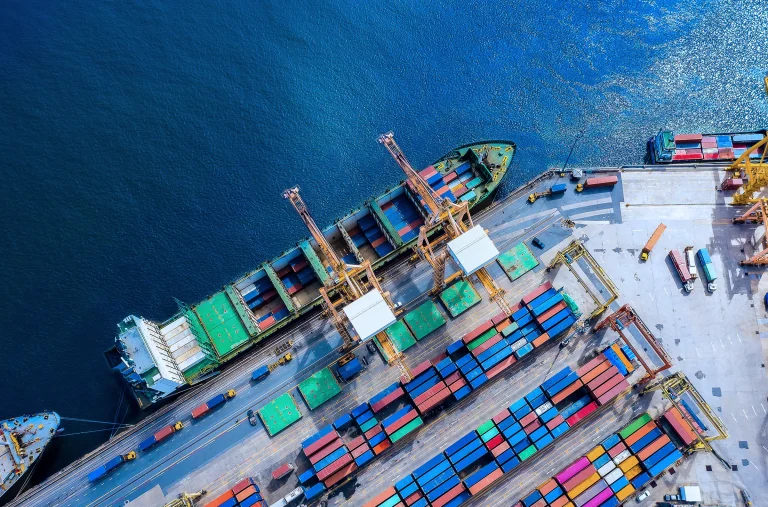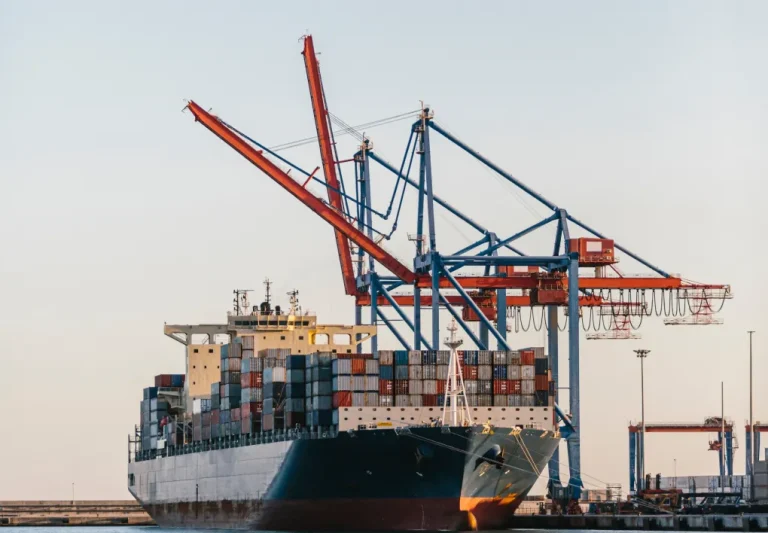In today’s fast-paced global marketplace, companies face a myriad of challenges when it comes to managing their international inbound supply chain operations.
From coordinating shipments through numerous supply chain partners on different systems, to planning downstream activities, which are predicated on delivery times that can be at risk; the intricacies of the global supply chain can be overwhelming.
The key to overcoming these challenges lies in obtaining complete visibility into not only the location of ocean shipments, but also their status, which allows for accurate predictive ETAs that enable better planning.
This article delves into the critical significance of ocean shipment tracking, specifically focusing on coordinating with receiving and transfer operations, and highlights critical capabilities in technology solutions that empower shippers, 3PLs, forwarders, and brokers to achieve comprehensive ocean visibility that streamlines the extended supply chains for all parties.
The Crucial Role of Ocean Shipment Tracking
Having seen ocean shipping volumes increase dramatically over the past 30 years, it’s curious that most companies are still relying on manual processes to capture information on the location and status of their shipments. For many companies it’s not from a lack of trying to digitize their operations.
But when you involve multiple parties, with different processes and systems, getting one clear view of a container’s journey is still a challenge. Now, with solutions designed for collaboration, along with the addition of new location and status data sources (in transit and at terminals), plus Machine Learning to calculate accurate ETAs enables an environment for better management of inbound operations than at any time in the past. What clear visibility into ocean shipping provides is:
- Real-time Insights for Decision Making: Ocean shipment tracking provides real-time insights into the location, status, and estimated time of arrival (ETA) of goods. This information equips you, your supply chain partners, and customers with the ability to make informed decisions based on accurate data, ensuring efficient allocation of resources and effective management of inventory.
- Proactive Issue Resolution: Unforeseen delays and disruptions are common occurrences in the supply chain, consider the Panama Canal slowdown and although port congestion has recently improved, it could become an issue again. With clear visibility, and a manage by exception structure, businesses can identify potential issues early on and take proactive steps to address them. This minimizes the impact of disruptions to your, or even your customer’s operations.
- Streamlined Appointment Scheduling: One critical aspect of inbound operations is appointment scheduling. Accurate ETAs, combined with a cloud-based dock appointment scheduling system frees up time previously spent on manual processes to book (and re-book) appointments. Dock appointment scheduling systems also ensure labor efficiency and accelerated equipment turns at receiving facilities.
- Enhanced Customer Satisfaction: A single platform for updates and reliable ETA predictions via an on-demand web-based portal, via automated emails, or other existing customer-facing systems will improve customer satisfaction by eliminating manual tasks and unnecessary time waiting for information.
But I Already have a TMS and a WMS, Why Isn’t that Enough?
As mentioned earlier, simply having a system with the capability to manage a complete visibility is very different than getting dozens, or hundreds of supply chain partners integrated and updating the critical data that goes into a visibility platform with dock appointment scheduling.
Having a solution that is easy to use, is already integrated to your supply chain partners, and has automated update capabilities is key. You also need to consider the fact that different systems are better at certain things than others. Some dock appointment solutions may be geared to only inbound shipments, whereas others may be focused on outbound operations. Balancing inbound and outbound flow at facilities can be tricky, especially if you have a live load/unload vs. a door drop or yard drop operation.
You need visibility and appointment scheduling that can easily tie into your or your customers’ TMS and WMS systems and that your partners can easily integrate to, or at least access through mobile applications. For some companies the visibility and dock scheduling solutions offered by their TMS or WMS vendor may be sufficient for their needs, but you should fully understand your business requirements and find the right solution for your operations.
Also remember that just because a visibility or dock appointment technology is offered by your TMS or WMS vendor, does not always mean they will work together better (or solve your business problem better) than adding a visibility or appointment technology from a different vendor on to your existing TMS or WMS.
Descartes Systems Group: Your Partner in Appointment Scheduling and Ocean Shipment Visibility
Descartes MacroPoint Ocean Visibility is built upon the latest architecture using the Descartes MacroPoint and the Descartes Global Logistics Network™ (Descartes GLN™). The integration and automation capabilities of Descartes MacroPoint’s Ocean Visibility platform go hand-in-hand to deliver insight and efficiency for all company types with ocean freight shipments. The data integrates with Descartes’ TMS platforms, Dock Appointment Scheduling, and other 3rd-party platforms via EDI, Application Programming Interfaces (APIs), or other data transfer protocols.
But the ‘plumbing’ together of systems is not enough, that is why Descartes built a comprehensive dataset from 80+ carriers, 400+ forwarders, 500+ ports/terminals, the top co-loaders, as well as U.S. Customs and Border Protection to get the most accurate and detailed information possible to drive predictive ETAs, enable Manage by Exception, and drive better business decisions. From an operational perspective, this means that you can view where your ocean containers are located, what their status is, and know at-a-glance if the shipment is at risk and if you need to take any action.
With accurate ETAs, and a clear visibility platform connecting all your supply chain partners you can drill-down to the next step with proactive, collaborative dock scheduling that enables carriers, suppliers, and facility personnel to create and approve dock door appointments. It streamlines the appointment setting process by distributing scheduling responsibilities from the facilities to carriers and suppliers and ensures all supply chain partners have visibility into requested, scheduled and rescheduled dock appointments. Additionally, the solution will automatically optimize the available slots proposed based on goods’ priority, available dock spaces, staff and equipment.
Having all of this data also allows you to identify sub-optimal business practices or partners that can be improved for the benefit of the entire operation. Reporting capabilities and dashboards will enable a continuous improvement environment for all stakeholders and make it easier to showcase the benefits both internally and externally from having a visibility and appointment scheduling system that works for your business.
In conclusion, achieving complete visibility into ocean shipments with dock appointment scheduling is an indispensable asset for companies striving to streamline their inbound operations. With accurate insights, businesses can optimize resource utilization, reduce waiting times, and enhance inventory management. Descartes Systems Group’s expertise and innovative solutions position them as the ideal partner to guide companies toward comprehensive ocean visibility. By embracing the power of visibility, businesses can navigate the complexities of the modern supply chain with confidence, efficiency, and resilience.
Speak with an Expert today to learn more.


